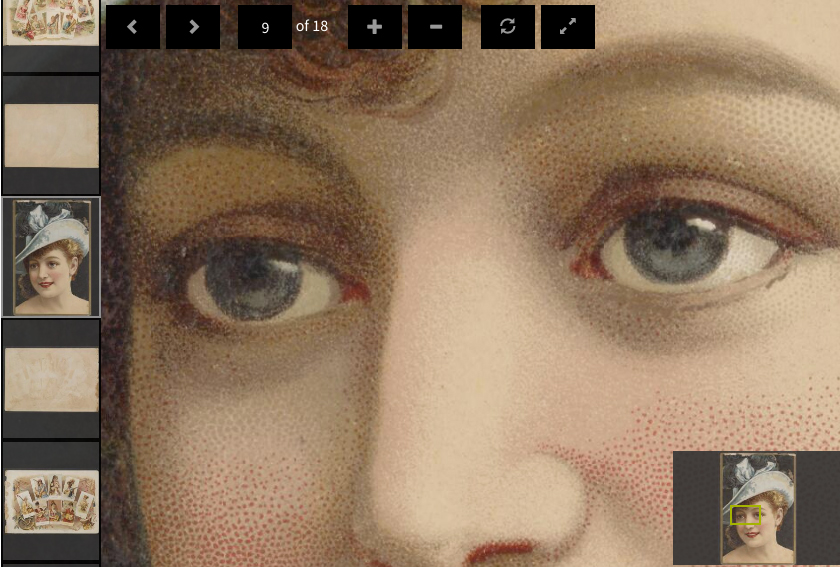Islandora 8 Overview

This is an assessment of the current state of Islandora 8, communities involved in its development and maintenance as well as the available features. This was written from a developer’s perspective with limited knowledge on metadata requirements. There are over 300 universities running Islandora 7 according to the latest survey according to Melissa Anez from the Islandora Foundation. As of this writing there are four instances of Islandora 8 digital repositories in production; one running an Institutional Repository that was migrated from Bepress, one Research Data Management platform, and several not counted that are currently in beta. These numbers do not include government or private instances which commonly don’t report or aren’t publicly accessible like UTK’s TRACE.
Islandora 8 is built on Drupal getting all the features and security of Drupal core and also thousands of contributed modules. Drupal’s popularity has grown in the last fews years with multiple higher education institutions adopting it, like Oxford University, Harvard University, Massachusetts Institute of Technology, Duke University, UCLA, University of Arizona, Penn State, Johns Hopkins University to name drop a few. As this assessment illustrates Islandora 8 is a full featured digital repository, it’s relatively simple to migrate content into it, migration of metadata is arguably lossless, it can be maintained by a fairly small development team, most actions require almost no coding making it highly sustainable to future proofing upgrades and several large active communitees. Islandora is a mature platform with hundreds of professionals collaborating daily to develop a sustainable platform with the goal to align repository content with generally accepted archive standards and meet the needs of hundreds of universities around the world. Islandora 8 uses Drupal so closely that almost any Drupal 8 module can be applied to any Islandora 8 content. This opens new options for the digital repository like using ultra high-performance graph databases for highly complex relationship queries and machine learning technology for image identification and search results improvements.
Summary
Here’s a list of all the Islandora features currently shipped with the 1.1.0 release (including some of those that come for free from contributed modules):
- Model content using core Drupal entities and fields
- Out of the box support for
- Collections
- Images
- Books
- Newspapers
- Audio
- Video
- Binaries
- Control how content is displayed using the UI
- Configure forms for content using the UI
- Categorize content using taxonomy terms
- Expandable file storage
- Drupal’s public file system
- Multiple private file systems using flysystem (check this link for a full list of supported adapters)
- Fedora Commons Repository
- Local or networked storage
- Allows for SFTP
- AWS S3 storage
- and more…
- REST API
- Basic CRUD operations with Drupal REST and JSON
- Read-only JSONLD serialization
- Extensive use of Link headers for discoverability
- Add files to objects with PUT
- Solr search (using search_api_solr)
- Configure search index through the UI or through YML configuration files
- Custom viewers
- Openseadragon
- PDF.js using the pdf module
- Other options are available but are not shipped with Islandora 8 out of the box
- Custom field types
- Extended Date Time Format (EDTF)
- Typed Relation
- Authority Link
- Custom entities for:
- People
- Families
- Organizations
- Locations
- Subjects
- Derivatives
- Convert / transform images (or just use Drupal image styles!)
- Extract images from PDFs
- Extract images from Video
- Convert audio formats
- Convert video formats
- All derivative operations have forms and can be configured through the UI
- Access control
- Hide content from users and search with the permissions_by_term module
- Hide sensitive fields from users using the field_permissions module
- Control repository events through the UI using the context module
- Index RDF in Fedora
- Index RDF in a Triplestore
- Derivatives
- Switching themes
- Switching displays/viewers
- Switching forms
- And much much more….
- Multi-lingual support
- Translated content is included in metadata and indexed in both Fedora and the Triplestore with proper language tags
- The user interface can be translated to languages other than English
- Bulk ingest using CSVs
- See the islandora_migrate_csv module for a detailed tutorial
- Views! You can filter, sort, display, and otherwise manipulate lists of content in multiple ways. For example:
- Make a browse by collections page (see this example on the sandbox, which can be customized here)
- Make an image gallery (see this example on the sandbox, which can be customized here)
- Make a slideshow (see this example on the sandbox, which can be customized here) using views_slideshow
- Put pins on a Google map using the geolocation module
- Execute actions in bulk on views results using the views_bulk_operations module
- Re-index content
- Re-generate derivatives
- And everything else you can do with Drupal actions (pretty much anything!)
- Bulk edit metadata using views_bulk_edit (see this example on the sandbox, which can be customized here)
- Paged Content
- Order sequences of content using a weight field
- Generate IIIF manifests for presenting paged content
- View paged content with the Openseadragon viewer
- Extracted Text
- Extract text from both TIFFs and PDFs
- Extracted text can be indexed in Solr
- FITS Derivatives
- FITS XML is generated for new file uploads
- Versioning
- Drupal revisions create Memento versions in Fedora
- OAI-PMH Endpoint
- Configurable using views
- Better Search / Discovery
- Default configuration for search indexing
- Default configuration for faceting
[List came from Islandora 8 Now Available & Islandora 8 v1.1.0 Now Available]